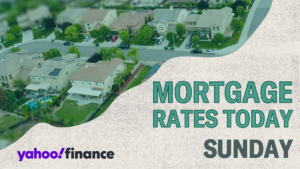Current Mortgage Rates: What You Need to Know
Mortgage rates have made headlines lately, and it’s crucial for both potential home buyers and homeowners considering refinancing to stay informed. According to the latest data from Zillow, here are the key takeaways on today’s rates:
- 30-Year Fixed Rate: 6.74%
- 15-Year Fixed Rate: 6.03%
- 20-Year Fixed Rate: 6.49%
- 5/1 ARM: 6.69%
- 7/1 ARM: 6.74%
- 30-Year VA Loan: 6.17%
- 15-Year VA Loan: 5.66%
- 30-Year FHA Loan: 6.29%
As we can see, the mortgage landscape is shifting, and the current rates indicate a moderate increase. It’s important to remember that these figures are national averages, rounded to the nearest hundredth. Your individual rate may vary based on your location, credit score, and financial profile.
What Do Future Trends Look Like?
Various economists, including those from Fannie Mae and the Mortgage Bankers Association (MBA), don’t foresee a substantial decline in mortgage rates through 2025. Their projections suggest that the 30-year fixed-rate mortgage may settle around 6.50% by year-end. This reinforces the idea that if you’re financially prepared to make a move, waiting for lower rates might not be the best strategy. Delaying could potentially mean missing out on the right opportunity.
Fixed vs. Adjustable-Rate Mortgages
Understanding the distinction between fixed-rate and adjustable-rate mortgages (ARMs) can help you make an informed decision that aligns with your long-term goals.
- Fixed-Rate Mortgages: Your interest rate is locked in for the entire term of the loan. This provides stability in your monthly payments.
- Adjustable-Rate Mortgages (ARMs): These typically offer lower introductory rates but will fluctuate after an initial period. For example, a 7/1 ARM maintains the same rate for the first seven years, after which it adjusts annually.
While ARMs may seem appealing initially due to their lower rates, don’t forget to consider factors such as potential future rate increases, which may erode the initial savings.
Why Timing Your Purchase Matters
It’s tempting to try and time the market by waiting for lower rates, but this strategy can backfire. If you’re financially ready to purchase a home or refinance, focusing on improving your credit score, saving for a larger down payment, and lowering your debt-to-income ratio will likely yield better mortgage terms for you.
Remember, lenders typically offer the best rates to borrowers who present favorable financial profiles.
Cost Calculations
Let’s illustrate how the differences in mortgage terms and rates can affect your monthly payments using an example mortgage of $300,000:
-
For a 30-Year Fixed Mortgage at 6.74%:
- Monthly Payment: $1,944
- Total Paid in Interest: $399,768
- For a 15-Year Fixed Mortgage at 6.03%:
- Monthly Payment: $2,536
- Total Paid in Interest: $156,558
In this comparison, the 30-year mortgage offers a lower monthly payment but comes with significantly more interest paid over time. Conversely, while the 15-year mortgage has higher monthly payments, it substantially reduces the total interest cost.
Finding the Right Mortgage Lender
For optimal results, we recommend applying for mortgage preapproval with multiple lenders within a short time frame. This strategy minimizes the impact on your credit score and enables you to accurately compare rates. When assessing lenders, don’t just look at the interest rates but also consider the Annual Percentage Rate (APR). This accounts for fees, discount points, and the overall cost of your loan, giving you a better sense of the total financial impact.
Local Factors Impacting Rates
How do these rates compare in your area? Keep in mind that local economies can significantly influence mortgage rates. Areas with high home prices might reflect higher average rates. Be sure to check the specific averages for your region, as they can deviate from national trends.
Final Thoughts
The current average rates suggest that while it may not be ideal to wait for lower rates, there are still opportunities to secure favorable terms. Focus on honing your financial situation and exploring the diverse mortgage options available to you. If you’re ready to buy, now might just be the perfect time. For ongoing insights and resources tailored to help you navigate your mortgage journey, stay connected with Extreme Investor Network.

